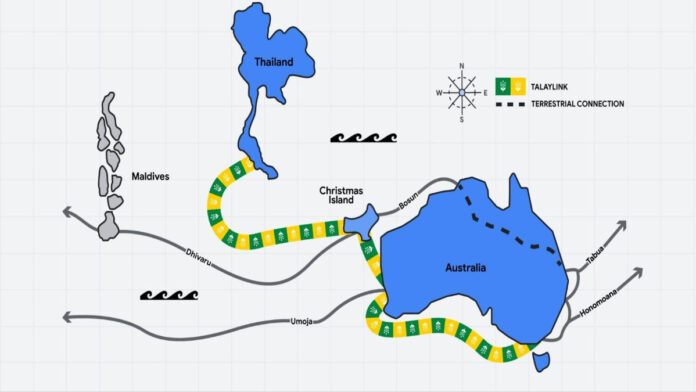TalayLink has extended the Interlink cable, which Google revealed under the Australia Connect initiative in 2023
In sum – what to know:
New Australia–Thailand subsea cable – Google introduced the TalayLink cable, creating a diverse route through the Indian Ocean and extending last year’s Interlink initiative.
Two regional connectivity hubs planned – Google will build hubs in Mandurah (Western Australia) and South Thailand to strengthen regional resilience and support cloud and AI workloads.
Expanded digital pathways – Combined with hubs in the Maldives and Christmas Island, the new system will broaden onward connectivity toward Africa, Southeast Asia, and the Middle East.
Google announced TalayLink, a new subsea cable system aimed at connecting Australia and Thailand, highlighting that the new subsea system is designed to increase geographic diversity and strengthen digital connectivity across the Asia-Pacific region.
TalayLink extends the Interlink cable, which Google revealed under the Australia Connect initiative in 2023. The route will run west of the Sunda Strait, an area currently hosting a large share of existing subsea cable paths, and is intended to offer an alternative pathway to Thailand. The project will also integrate with Google’s planned data centers and cloud region in Thailand, the firm said.
Alongside TalayLink, the company also announced plans for two new regional connectivity hubs. One will be built in Mandurah, Western Australia, offering a secondary landing point beyond Perth, where most subsea systems in the region currently land. The second hub will be located in South Thailand, a long-established junction for subsea cables. Google noted that it is partnering with Thai carrier AIS to make use of existing colocation infrastructure in the area.
Once completed, the U.S. company highlighted that TalayLink and the new hubs are expected to support network resilience across Australia, Southeast Asia, and onward routes to Africa. When combined with earlier announced hubs in the Maldives and Christmas Island, the system will provide extended options for connectivity across the Indian Ocean and toward the Middle East.
Google’s announcement adds to a growing list of subsea cable projects the company has introduced in recent years, many centered on Oceania. Along with the three systems slated to land at Christmas Island, Google’s planned regional builds include the Australia Connect Interlink, Honomoana, Humboldt, Bulikula, Taihei, Proa, Echo, Dhivaru, and Umoja cables.
Earlier this month, the company unveiled Dhivaru, a new Trans-Indian Ocean subsea cable system that will link the Maldives, Christmas Island, and Oman. In addition to the subsea cable system, Google also said it will build two new connectivity hubs in the Maldives and Christmas Island.

